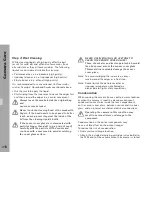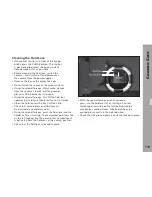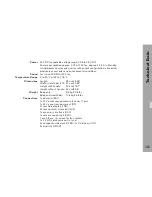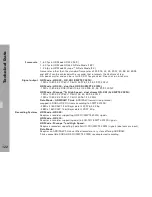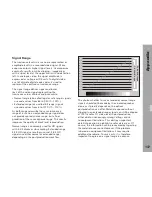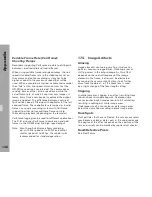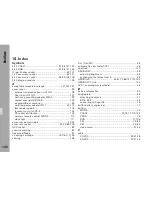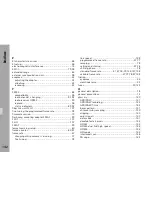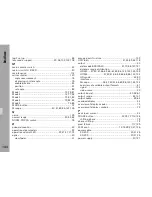
A
p
pe
nd
ix
130
17.2. Glossary
Clipping
See section: Image Artifacts.
Color Signals and Chroma (Sub)Sampling
RGB, YUV, 4:4:4 and 4:2:2 are terms often used for
digital video. While RGB and YCbCr (correct denotation
for the digital component signal often called YUV)
represent different forms of color signals, 4:4:4 and
4:2:2 are a denotation for chroma sampling.
Color Signals
• RGB means an analogue or digital form of signals for
the three color components red, green and blue. RGB
signals deliver very high quality images providing high
creative freedom for postproduction. At the same time
RGB signals require high bandwidth and storage space.
• YCbCr is a component signal consisting of a luma
channel (luminance) and two chroma channels
(color difference channels). These components
are calculated from an RGB signal. YCbCr signals
require less bandwidth than RGB signals and thus
are more common for economical reasons.
Chroma (Sub)Sampling
The bandwidth required by component signals
can be further reduced by chroma sub-sampling.
The idea behind this technique utilizes human
vision. A reduction of color information has lesser
influence on the impression of an image, as long
as full luminance information is available. For this
reason, the chroma channels of a component
signal may be sampled with a lower frequency
than the luma channel – i.e. sub-sampling.
The notation of three or sometimes four digits separated
by colons represents the relationship of sub-sampling.
The first digit represents the relative horizontal
•
sampling frequency of the luma channel (simply
speaking: the amount of information per line).
“4” is just a historical reference to standard
definition television and provides a base value.
The second digit represents the horizontal sub-
•
sampling factor of the chroma channels (i.e.
the chroma/luma information ratio per line).
The third digit represents the vertical sub-sampling
•
factor of the chroma channels (i.e. chroma/
luma information ratio for two subsequent
lines). Only consumer products make use of
this kind of sub-sampling. In professional video,
this digit is identical with the second.
If a fourth digit is given, it indicates the presence
•
of an alpha channel. An alpha channel contains
transparency/opacity information used in
postproduction (e.g. keying, compositing) and is
provided for each pixel without sub-sampling.

